How to Freeze Bell Peppers? (2 Ways to Do It)
Too many bell peppers and not enough time to use all of them before they go bad?
Or maybe you’re considering buying in bulk, freezing, and having them ready whenever needed?
If either is true, you’re probably wondering: how to freeze bell peppers?
The best way to freeze bell peppers is to freeze them sliced. You wash them, remove the stems, seeds, and membranes, and slice them. Then, you pre-freeze them on a cookie sheet, transfer the frozen pieces into a freezer bag, and return to the freezer.
That’s the super short version of it.
Now, if you’re interested in details, here’s what we cover below:
- how freezing affects bell peppers (do they freeze well?)
- freezing sliced bell peppers (a step-by-step guide)
- if freezing whole bell peppers is an option
- ways you can use frozen bell peppers
Sounds interesting? Read on.
The method described in this article works for all kinds of bell peppers: green, yellow, orange, and red. In other words, everything below stays true no matter what you have. Feel free to mix colors if you want.
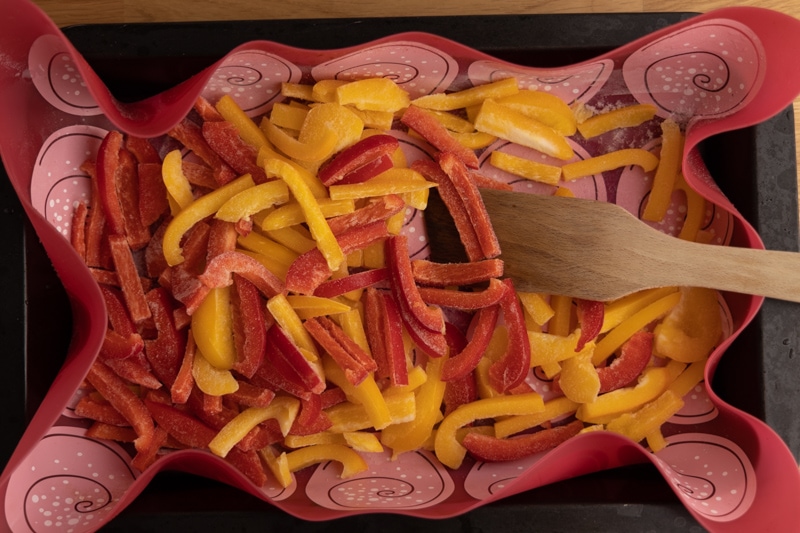
Can You Freeze Bell Peppers?
You can freeze bell peppers, and they freeze fairly well.
As usual for veggies, you should expect a loss of crispness after thawing. And that means they’re going to work best in cooked dishes and not in salads. Fortunately, there’s no shortage of recipes that require cooking bell peppers (more on that later in the article).
Now, if you’re wondering, here’s how defrosted bell peppers slices look like:
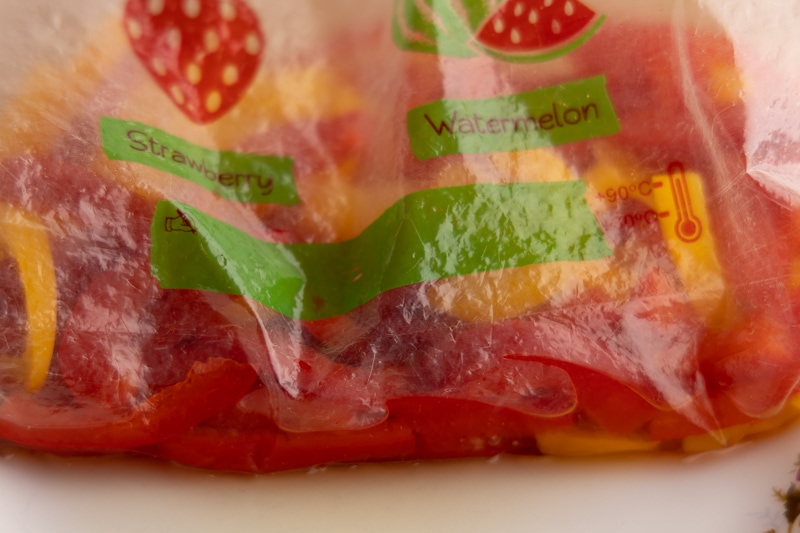
As you can tell, there’s a lot of water, and the slices are soft and mushy (kind of similar to spoiled bell peppers or cooked ones).
Related: How to store bell peppers?
When it comes to dates, bell peppers keep for up to two weeks in the fridge, so if yours are fresh, you still have plenty of time to use them. Maybe even enough time to use up all of them and avoid freezing whatsoever.
Now that you know what to expect, let’s talk about both ways you can freeze bell peppers.
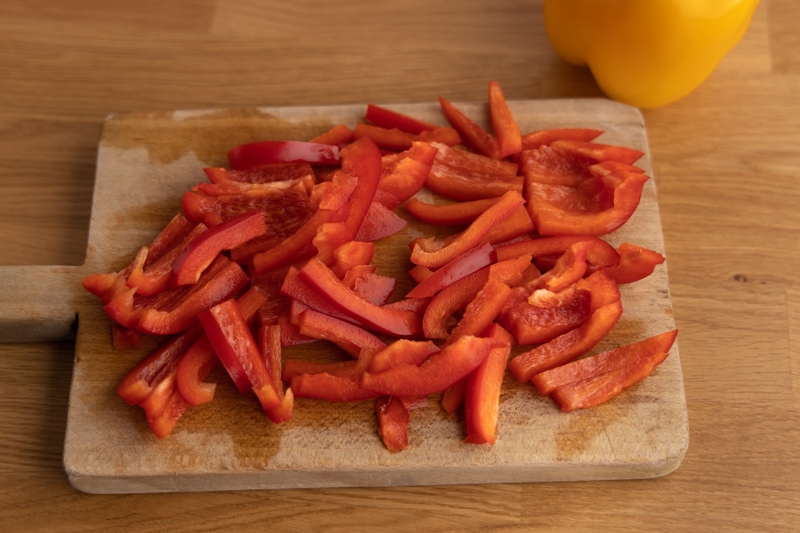
How to Freeze Sliced/Diced/Chopped Bell Peppers
This is most likely the best way to freeze bell peppers. You do all the prep before freezing the peppers so that you can use them right after defrosting (or even skip defrosting).
This method doesn’t involve blanching because you don’t need to blanch peppers before freezing them. That means it requires little extra time besides what you need to wash and cut up the peppers (which you need to do at some point anyway).
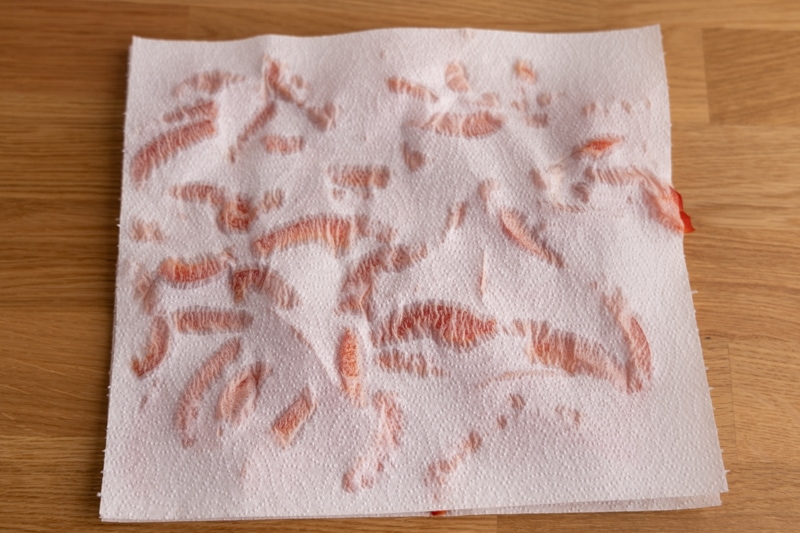
Here’s how to freeze sliced bell peppers:
- Prep. Wash the peppers, then remove the stem, seeds, and membranes.
- Cut them up. Now is the time you cut up the peppers in any way that makes sense for you. You can slice, dice, or chop them, or do anything else in between. Or you can do a bit of each, depending on your needs. If you’re not sure how you’ll use them, I suggest going with large slices. Cutting those after defrosting might be a bit of a pain (similar to working with soft veggies or fruits), but at least you keep your options open. After all that cutting, let the veggies dry on paper towels.
- Pre-freeze. Take a cookie sheet or a large tray and spread the peppers on it in a single layer. Try to arrange them in a way they don’t touch each other, or at least don’t form any clumps (some touching is not a problem). Put that tray in the freezer and leave it there until the cut-up peppers freeze solid. That should take 2 to 3 hours, but you can leave them there overnight just as well.
- Bag up. Break up clumps if any formed during the pre-freezing phase. Then transfer the frozen peppers into a freezer bag, squeeze out all the air, and seal it. The bag will protect the veggies from freezer burn and free up the tray for other uses. Last, label the bag with the name and date if you find that helpful or it’s not obvious what’s in the bag.
- Freeze. Put the bag (or bags) with frozen peppers in the freezer.
That’s it. The peppers will stay safe to eat in the freezer forever, but try to use them within 2 to 3 months of freezing for quality reasons.
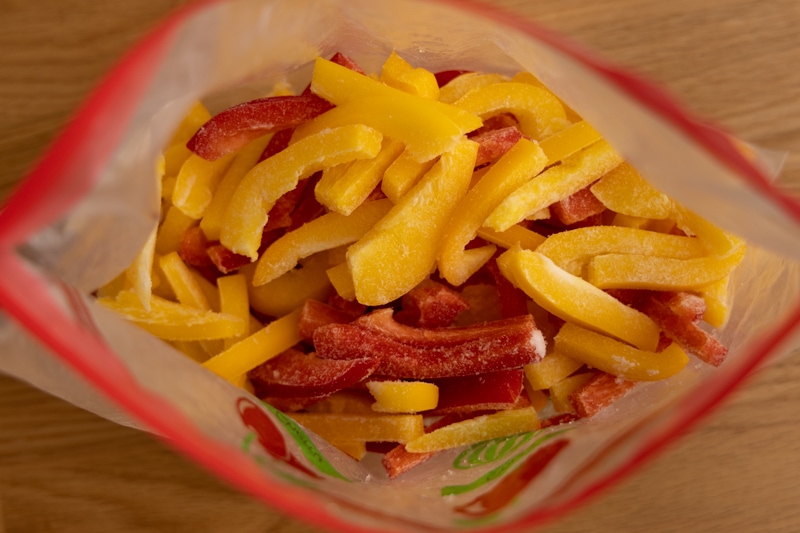
How to Freeze Whole Bell Peppers
Freezing whole peppers is another option, but it comes with its drawbacks:
- whole peppers take much more space than sliced ones
- cutting defrosted peppers is more difficult than cutting fresh ones
- you need to do some prep before you freeze them anyway
That said, if you need the peppers whole for stuffed peppers or a similar recipe, freezing them this way is your only option.
Here’s how you freeze whole bell peppers:
- Prep. Wash the peppers, cut off the stems and remove the seeds and membranes. If you need to keep the tops because the recipe calls for that, cut them off, scoop out the seeds, remove the membranes, and put the tops back on. Last, let them dry thoroughly – you don’t want too much moisture in the freezer.
- Package. If you’re freezing bell peppers for the long term, like three months or more, consider wrapping each in aluminum foil to protect it from freezer burn. Otherwise, skip the extra wrapping. Then place the peppers in a freezer bag, squeeze out any excess air, and freeze them. Freezing multiple peppers in a single bag is okay as long as the area they touch each other is relatively small. This way, you’ll be able to remove and defrost only one of the peppers from the bag if need be.
- Freeze. Place the bags in the freezer.
Once again, freezing bell peppers sliced is a better option, and you should only freeze them whole if the recipe requires them whole.
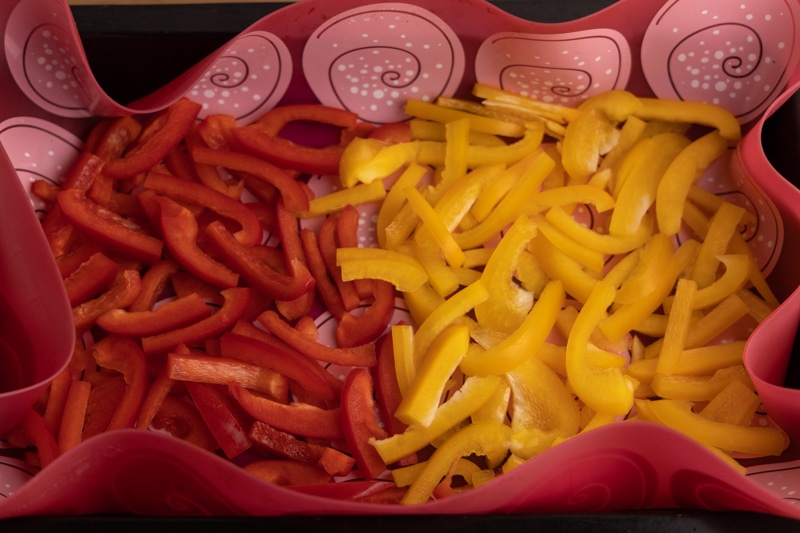
How to Defrost Bell Peppers
When it comes to defrosting, there are two ways to go about that:
- defrosting bell peppers overnight in a container in the fridge
- using the peppers frozen
(I know skipping defrosting isn’t really a “defrosting method.”)
Using the peppers without thawing them should be your go-to method. In most cooked dishes, you can throw in the peppers, and everything is going to cook just fine. The slices are small and defrost in no time when under heat.
Defrosting the peppers is required only in a few cases.
One such case is stuffed peppers, where you probably don’t want to put in the oven a frozen pepper that’s stuffed with all other ingredients. If you do that, chances are that either the pepper won’t be fully cooked or the stuffing will be overcooked. Either of which is far from optimal.
But if using the bell peppers straight from the freezer doesn’t put the dish at risk, go with that option. You did all the prep before freezing so that you don’t have to worry about it afterward.
Last but not least, let’s talk about how you can use those frozen bell peppers.
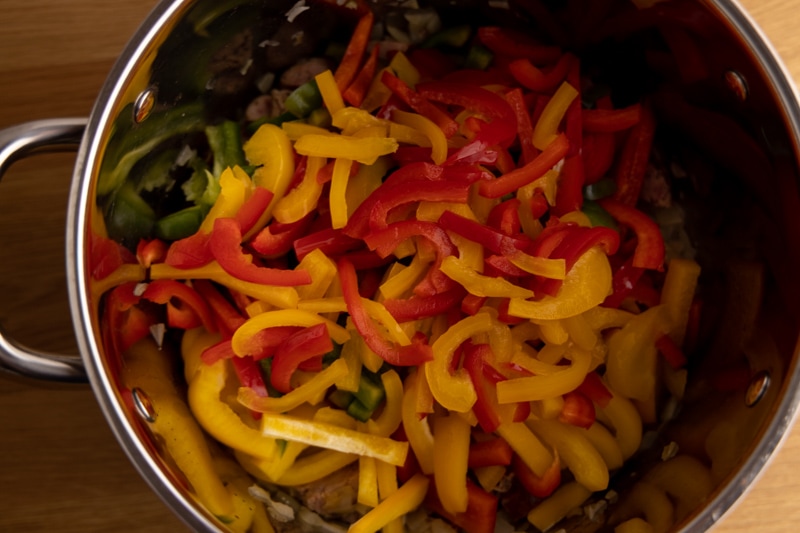
Ways to Use Frozen Bell Peppers
Here are a couple of ways you can use frozen bell peppers:
- stuffed bell peppers (one of the few dishes that require you to freeze the peppers whole)
- roasted bell peppers (there’s a gazillion recipes online that mainly differ in seasonings used)
- sauteed bell peppers (they make a great side dish, plus you can sautee peppers with any other veggies you like)
- add to chilis or casseroles
- put them on homemade pizza
As you can tell, there are quite a few options for using the peppers, and finding one or two you can use the peppers in should be a breeze.
Rotten Records: Share Your Snap!
Caught some food past its prime? Upload your photo to “Rotten Records” and help others spot the signs of spoilage. Every image makes our food community safer and more informed!
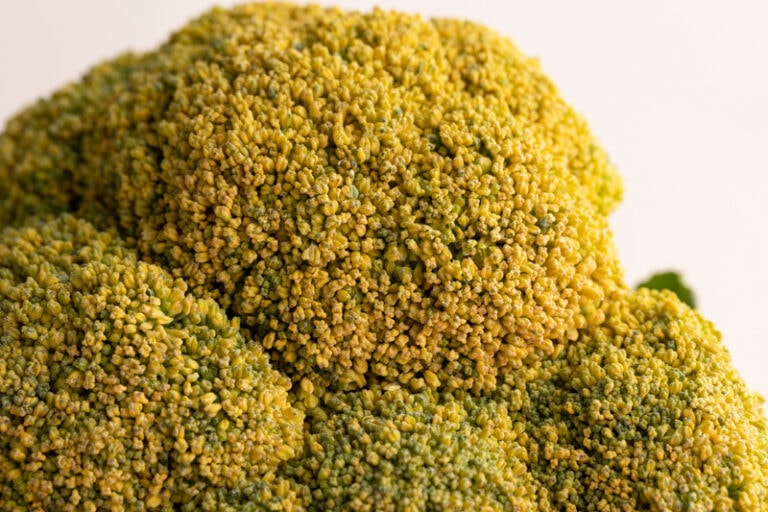
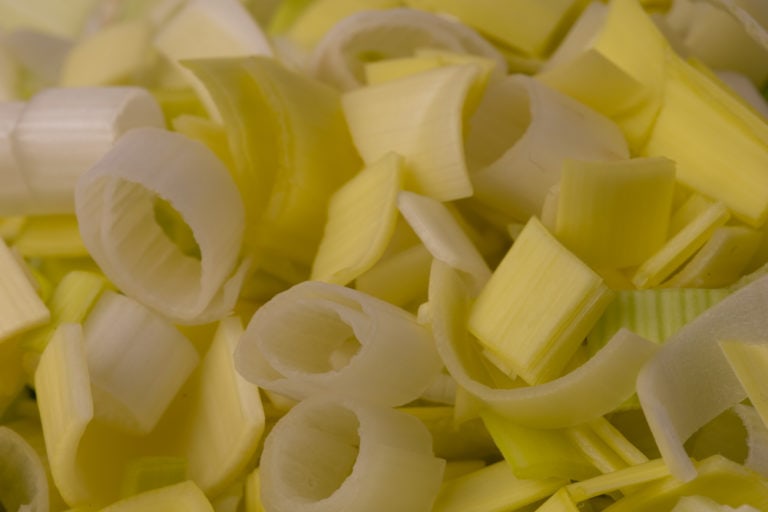

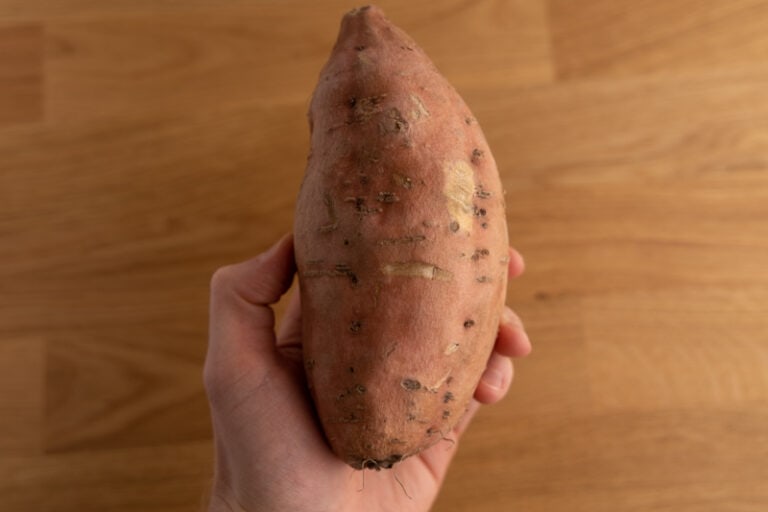
![How to Tell if a Sweet Potato Is Bad? [4 Spoilage Signs]](https://www.doesitgobad.com/wp-content/uploads/Inside-of-old-sweet-potato-768x512.jpg)
![How to Tell if Kale Is Bad? [4 Spoilage Signs]](https://www.doesitgobad.com/wp-content/uploads/kale-spoilage-signs-infographic-1-768x512.jpg)